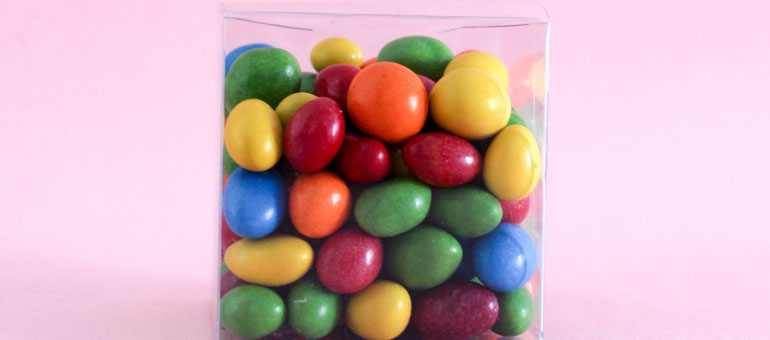Choosing the right type of foods at the point of purchase or consumption is an important way to improve quality of diets. The idea of using on-pack visual cues or symbols to guide food choices has existed for quite some time, and recently, Chile has enacted new legislation that includes a warning symbol on products containing high levels of sugar, salt or fat. But less is known about the effectiveness of such schemes in resource-poor countries. Could they be relevant in contexts where many consumers are illiterate and make their purchases from kiosks or wet markets rather than supermarkets?
An example from India suggests that if the symbols are meaningful to consumers then they do use them. Packaged food and drinks in India carry a clearly visible green dot to signify that the product is suitable for vegetarians. A red dot signifies a product not suitable for vegetarians. Since this is an important distinction for many consumers, they look for and use this very simple symbol.
As part of its work on creating demand for nutritious diets and foods, GAIN arranged a workshop in London on 5 & 6 June to begin the process of understanding the different types of symbols being used, their purpose, the evidence for their success, and their actual or potential applicability in low- and middle-income countries (LMIC).
In high-income countries, reducing the harmful effects of chronic, non-communicable diseases (NCDs) like diabetes and high blood pressure is clearly the major driving force behind these efforts. As a result, these efforts are focused on reducing consumption of salt, sugar and fat in packaged food and drinks using three broad approaches:
- Front of pack ‘traffic-light type’ infographics that show the levels of salt, fat, sugar and energy and colour code (green, amber, red) to summarise information for consumers.
- Front of pack ‘positive choice’ symbols like a tick to signal a healthier choice based on some underlying criteria e.g. those developed by the Choices International Foundation.
The Health Star method in Australia uses a scoring system that considers not only levels of salt, sugar etc. but also levels of good nutrients e.g. vitamins or protein. A summary score ranging from 0.5* to 5* is then used to convey the overall rating of the product on pack.

Choosing the right type of foods at the point of purchase or consumption is an important way to improve quality of diets
These approaches are mainly aimed at encouraging the manufacturers to reformulate their products. There is limited evidence to show consumers changing their choices based on these visual symbols. Hence the quality of diet is being influenced indirectly through improving products that are available for sale. Consumer and government interest in healthier options is used to generate industry participation in such voluntary schemes because country governments are reluctant to mandate product reformulation. These schemes follow a certification style model based on defining a set of criteria that products need to meet.
Low income consumers in LMIC do most of their food shopping in informal markets or small kiosks rather than in supermarkets. Packaged foods are a relatively small part of their food spending. Finding ways to extend the current solutions to informal markets and non-packaged food would increase the relevance in these markets. Zambia is planning to test such an idea.
Ghana’s Obaasima seal (Obaasima means The Complete Woman), takes a more targeted approach by focusing on helping women improve their diets. The seal is like a brand for women and this approach relies on women looking for products bearing its symbol when shopping. A more ambitious version of the Obaasima approach could be to build a wider social movement and campaign to promote emotional benefits of good diets such as a happy and successful life or fulfilment of dreams. In addition to the criteria-based model, under this approach specific nutritious foods or food categories, e.g. dairy or eggs, could then be promoted to improve quality of diet depending on the local needs.
The diverse range of experts who took part in the workshop, strongly felt that it is worth continuing to work together to develop these ideas further and create a learning and testing agenda. A great output would be a set of practical guidelines for effective ways of helping consumers, industry and governments in resource-poor countries to improve quality of diets through the use of visual symbols.